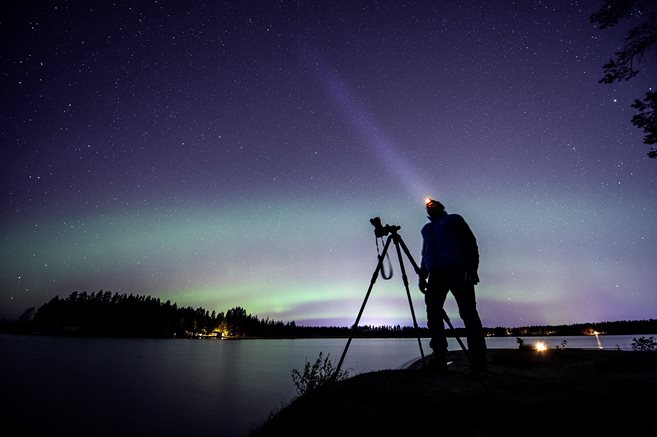Photograph the northern lights
The photographer Per Lundström is an expert in capturing the northern lights in pictures and many of his beautiful northern lights pictures are taken in Luleå. Here he gives his three best tips on where you can see the northern lights and photograph them.
1. Gäddvik
Perfect place to go out and spot the northern lights, preferably at the fishing museum and the small barn that exits via a jetty. Dark and good place to see what's happening in the sky, also good for photography with the water and any other fun that might be in the picture.
2. Ormbergsbacken
Classic place to watch the northern lights in Luleå. Here you can easily and quickly see if there is anything moving in the sky when you are standing at the top of the hill. Here, too, you can get nice pictures with the city of Luleå shining below.
3. Sinksundet
Here is also a good place to stand down by the swimming area. It's dark and by the water it's good for both photography and easy to see the northern lights in both directions.
Per's photos can be found on Instagram: @taigapic

How do you go about photographing the northern lights?
In addition to finding a really good spot and making sure to be dressed to be out for a good while, some settings are required on your camera. Use a tripod to avoid blurry images. If you don't have access to a tripod, you can stabilize the camera in another way, for example with a stone or a piece of wood. To best photograph the northern lights, your camera should be set to manual settings. Without automation, you adjust focus, shutter speed, ISO and aperture yourself.
Shutter speed: The time the shutter is open is called shutter speed or exposure time. The longer the shutter speed, the more light enters the image.
Aperture: You could say that the aperture is the pupil of the camera. Adjusting the aperture changes the amount of light that passes through the lens. Use the lowest possible setting for your lens when photographing the aurora – for example f/1.4–f/4.
ISO: A higher ISO value adds more light to your photo. Between 800 and 3200 is usually a good ISO value when photographing the northern lights, depending on other light sources such as the moon.
Focus: Use manual focus for best results. Find a clear star and adjust the focus so that the star is as small as possible. Most often, this means that you focus on infinity and then turn back a little.
In total; A good starting point when photographing the northern lights is aperture f/2.8, ISO 1600 and 15 second shutter speed. If the northern lights are moving quickly, you can try reducing the shutter speed.
Is it possible to take pictures with a smartphone?
Of course! But results are rarely as good as with a SLR camera. If you are going to take a photo with a smartphone, the basic tip is to set night mode, otherwise you risk getting shutter speeds that are too short.